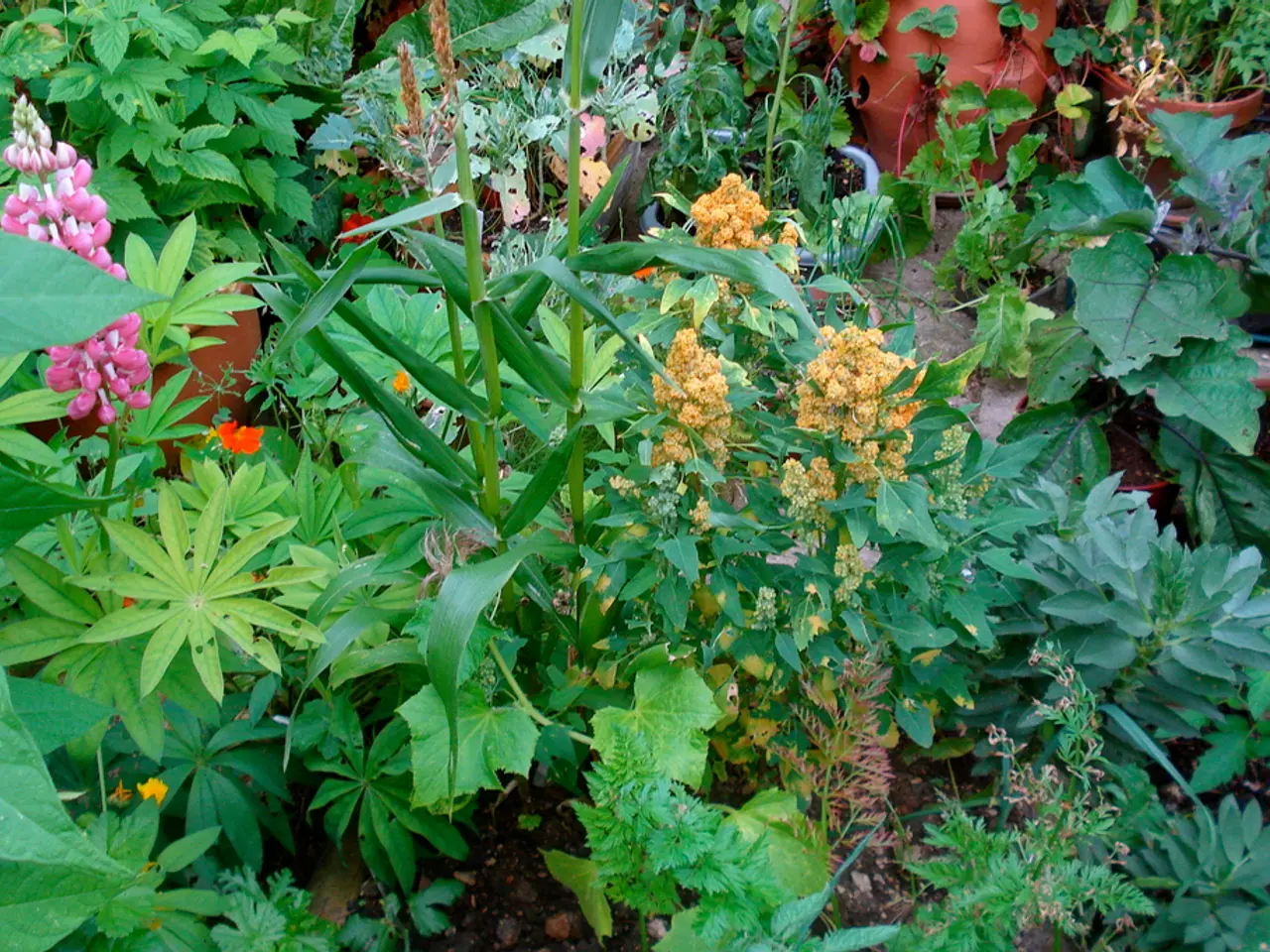Timing the Application of Grass Seed: Crucial Advice for a Thick, Vibrant Lawn
A lush, green lawn is a sign of a well-maintained garden. However, achieving this requires careful planning and the right approach, especially when it comes to fertilizing new grass seeds. Here's a comprehensive guide on how to fertilize new grass seeds for a thriving lawn.
Timing
The timing of fertilizing new grass seeds is crucial. At seeding, applying a starter fertilizer helps new grass develop strong roots from the beginning [1][3]. On the other hand, six to eight weeks post-seeding, fertilizing at this point avoids harming delicate seedlings and supports faster growth.
For established lawns, the fertilization schedule depends on the grass type and season. Cool-season grasses like Kentucky bluegrass, ryegrass, and fescue do best with fertilizing in early fall and early spring [2][4]. Warm-season grasses such as Bermuda, zoysia, and St. Augustine should be fertilized in late spring through summer while actively growing [2][4].
Type of Fertilizer
When it comes to fertilizing new grass seeds, using a starter fertilizer specifically formulated for new grass seed is essential. These have higher phosphorus (middle number in N-P-K ratio), which encourages root development, compared with normal lawn fertilizers that might have less phosphorus [1][3].
Avoid using "weed and feed" products when seeding new grass, as the herbicides can prevent the grass from growing [1].
Additional Tips
- Water the lawn lightly and frequently as the new grass sprouts to keep soil moist without overwatering [1].
- Avoid mowing until the new grass is at least 4 inches tall [1].
- Use a spreader to apply an even layer of fertilizer and prevent uneven growth and spots.
- If issues like yellowing grass arise, it could indicate nutrient deficiency or overapplication, so adjust your fertilization accordingly to maintain a healthy, lush lawn.
Soil Preparation
Preparing the soil before sowing new grass seeds is equally important. This includes weeding, raking it level, and adding a granular starter fertilizer. Organic matter like compost is also amended to enhance soil quality.
Taking soil samples from different spots in the yard and sending them to a local extension office or using a home testing kit can help determine the pH and nutrient levels of the soil. Ideal grass growth happens when soil pH is between 6.0 and 7.0.
When the soil needs adjustment based on test results, lime is added for acidic soil, and sulfur is used for alkaline soil.
Fertilizing Established Lawns
For established lawns, the fertilization schedule depends on the grass type and season. Cool-season grasses like Kentucky bluegrass, ryegrass, and fescue do best with fertilizing in early fall and early spring [2][4]. Warm-season grasses such as Bermuda, zoysia, and St. Augustine should be fertilized in late spring through summer while actively growing [2][4].
Expert Advice
Glen, an experienced gardener with over 15 years of hands-on experience in garden maintenance, design, and landscaping services, has written several posts on this blog, including topics like Garden Fungicides, Candy Cane Peppers, and Watermelon.
In summary, apply a starter fertilizer at seeding, then fertilize again 6-8 weeks later once seedlings are established, using a formula rich in phosphorus to encourage root growth, and avoid herbicide-containing fertilizers until the lawn is mature [1][3]. Adjust fertilization schedules thereafter depending on your grass type and growing season [2][4].
Remember, the right fertilization and soil preparation can make a significant difference in the success of a new lawn. Happy gardening!
[1] University of Missouri Extension [2] Purdue University Extension [3] Cornell University College of Agriculture and Life Sciences [4] Iowa State University Extension and Outreach
- To ensure a strong root system for new grass seeds, it's recommended to apply a starter fertilizer at the time of seeding, as this promotes healthy growth from the get-go.
- Around six to eight weeks after seeding, it's essential to fertilize again to avoid harming the delicate seedlings and encourage faster growth, using a fertilizer rich in phosphorus.




